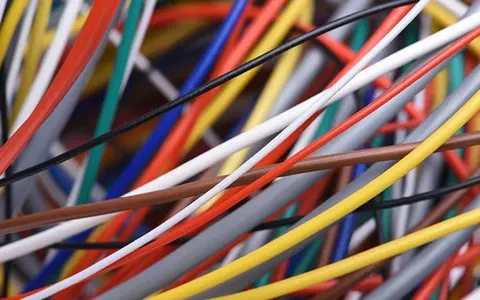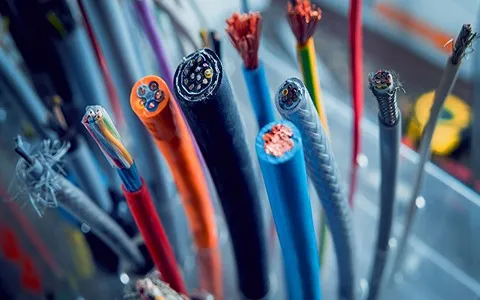There are a number of multi-conductor cables designed for many types of applications.
Multi-conductor cables consist of two or more conductors used primarily for control or power applications.
One of the most difficult applications of any multiconductor cable is the repeated handling of control equipment in a forced direction.
These applications include moderate tension and repeated forced directional bending or coiling.
For these types of applications, the best results are achieved with specially designed flexible cables.
However, incorrect installation of flex cables can lead to premature cable damage.

High voltage wire installation standards
Safety is the most important factor which is considered in the standards for the installation of the high voltage cable and wire.
Construction and characteristics, performance, and testing of HV, MV, and LV (HV: high voltage; V ≥ 60 kV. MV: medium voltage; 1 kV < V < 60 kV. LV: low voltage; V ≤ 1 kV) installation and equipment used All comply national and international technical standards and regulations.
Manual operation of equipment in the same way, for maintenance or network reconfiguration purposes, and obligations of owners and operators, as well as procedures to be followed, documentation to be prepared, safety measures to be implemented, and the protective equipment and clothing are regulated by national and international standards as well as national laws.

best High Voltage Wire
Electrical wiring regulations are official technical documents that define the characteristics and safety measures to be followed during the design, construction, and operation of electrical power systems.
The EIA/TIA 568 standard specifies that a structured cabling system must consist of the following subsystems: Workspace Subsystem Horizontal routing subsystem (horizontal routing) Engine room system (engine room or telecommunications room) Computer housing system or communication rack, wiring cabinet (telephone cabinet or wiring cabinet).

High voltage cable installation standards
The standards for the installation of different cable and wire types may change from one country to another.
So in the following list, we gathered some of these standards in regard to their regulated country. Europe: Portugal:
- Low voltage electrical installations (RTIEBT) Technical regulations - Low voltage
- Substations and Substation Safety Rules (RSSPT) - Substations
- Safety Regulations for High Voltage Power Lines (RSLEAT) – EHV, HV and MV overhead and underground cables
- Safety Rules for Low Voltage Distribution Networks (RSRDEEBT) – Low Voltage Distribution Networks (Aerial and Underground Cables)
France: French standards NF C 15-100 (low pressure) and NF C13-200 (high pressure) Germany: German Standard UK: BS Standard 7671 (IET Wiring Regulations) India, Pakistan, Bangladesh, Philippines and other countries: IEC Standard 60364 U.S. National Electrical Code (NEC) - NFPA Standard 70
Canada Canadian Electrical Code (CSA C22) Parts I to VI and SPE-1000: Field Evaluation Model Specification for Electrical Equipment Middle East/Gulf States With the exception of the Kingdom of Saudi Arabia, these wiring regulations are mainly based on British Standard BS 7671. Dubai: Electrical Installation Regulations by Dubai Electricity and Water Authority (DEWA) Abu Dhabi: Electricity Wiring Regulations Oman: Oman Electrical Standard (OES) Qatar: Rules for the installation of electrical wiring, electrical equipment and air conditioning equipment Bahrain: Electrical Codes and Guidelines for Electrical Contractors Kuwait: MEW/R-1 to MEW/R-8 and MEW/S-1 Electrical Installations Regulations Standards play an important role in electrical installations because they provide a common language for everyone involved in the different phases of a project (design, manufacture, construction, testing, and monitoring).

best High Voltage Wire Features
Some commonly used main criteria are: International International Standards Organization (ISO) Europe European Standard (EN) Health and Safety Enforcement (HSE) - UK British Standards Institute (BSI) – United Kingdom French Standard (NF) Portuguese Standard (NP) German standards (DIN and VDE) Italian standard (UNI) Spanish standard (AENOR) U.S. Occupational Safety and Health Administration (OSHA)
Canada Canadian Standard (CEA) Brazil Brazilian Standard (NRB/ABNT) Australia and New Zealand Australian and New Zealand Standards (AS/NZS) China Chinese Standard (GB).

0
0